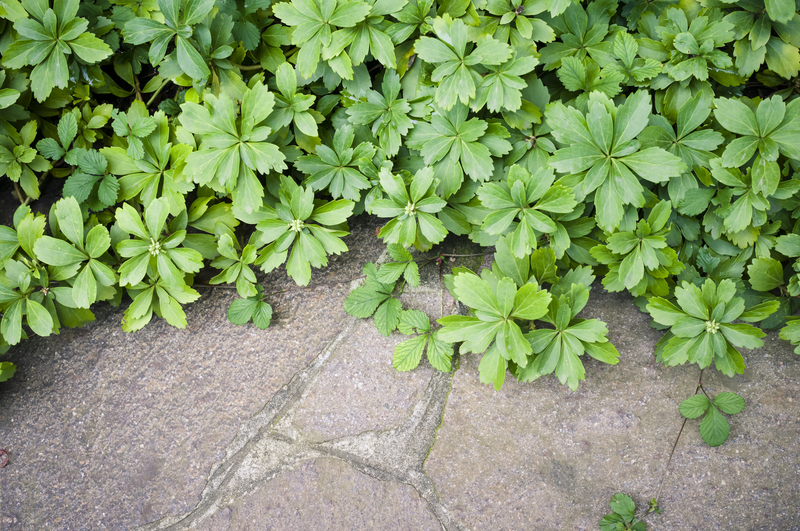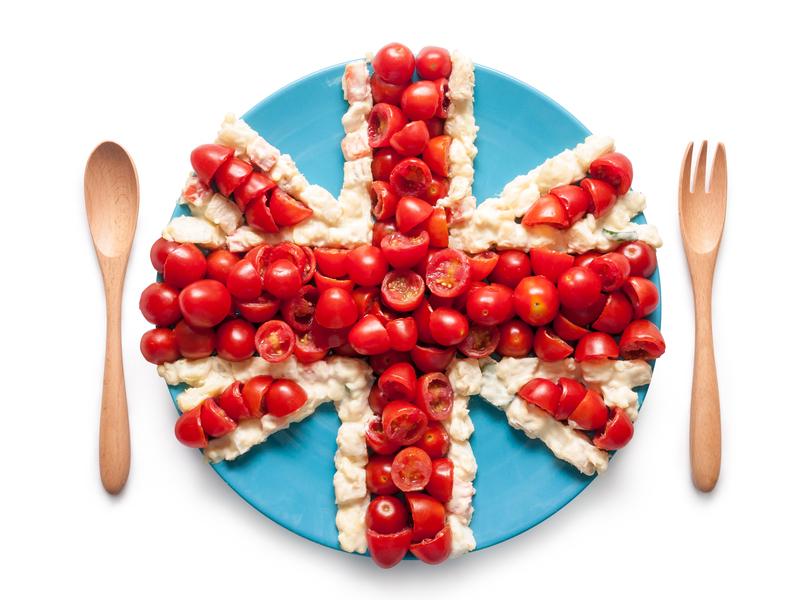Designing a Pet-Safe Garden Haven
Posted on 18/08/2025
Designing a Pet-Safe Garden Haven: The Ultimate Guide
Imagine your beloved pets joyfully bounding through a lush garden, safely exploring their own little paradise right in your backyard. Designing a pet-safe garden haven is about more than just aesthetics - it's about creating a nurturing environment that enriches your pet's life and keeps them out of harm's way. In this comprehensive guide, we'll equip you with creative ideas, practical advice, and expert tips to craft a beautiful and secure oasis your pets will adore.
Why Create a Pet-Friendly Garden?
Pets need outdoor enrichment just as much as humans do. Dogs, cats, rabbits, and other animals benefit physically and mentally from spending time in a safe, natural space. Whether your goal is designing a pet-proof garden or providing stimulating activities in a secure yard, understanding the benefits will guide your design decisions.
- Physical exercise: Ample space and features encourage pets to run, dig, and play.
- Mental stimulation: Diverse plants and sensory areas keep pets engaged and curious.
- Reduced stress: Nature soothes anxiety in both pets and humans.
- Safe boundaries: Fencing and layout help protect pets from hazards and prevent escapes.
Common Garden Hazards for Pets
Before diving into pet-friendly garden design, it's crucial to identify and eliminate common dangers, such as:
- Toxic plants (like lilies, azaleas, and foxgloves)
- Pesticides and chemicals (restrict use of fertilizers and weed-killers)
- Sharp tools and garden edging (store out of reach and opt for rounded design features)
- Unsecure ponds or pools (ensure safe barriers or shallow water features)

Planning Your Pet-Safe Garden Layout
Good garden design starts with knowing your pet's personality, needs, and natural instincts. Ask yourself:
- Does my pet like to dig, roam, or climb?
- Are they curious about water, small animals, or certain smells?
- Will my pet escape if given an opportunity?
- Are there multiple pets with different needs?
Design Elements for a Secure Pet Garden
Include features that protect your pets and keep the garden looking beautiful:
- Secure fencing and gates - Choose robust fencing with no sharp edges, ensuring it's tall enough for jumpers and sunk into the ground for diggers. Self-closing or lockable gates add extra peace of mind.
- Clear pathways - Design durable, anti-slip paths for gentle paws. Materials like mulch, smooth stone, or paw-friendly turf are ideal.
- Shaded areas and shelters - Provide cooling retreats under trees, shade sails, or custom pet pergolas.
- Water stations - Incorporate accessible, clean water bowls or gentle fountains your pet can safely use.
Bonus: Consider a small wading pool for dogs.
Choosing Pet-Safe Plants and Greenery
One of the most critical aspects of designing a pet-safe garden haven is selecting plants that are non-toxic and resilient. While the list of dangerous plants is long, there's an equally wonderful selection of safe options to beautify your landscape.
Top Pet-Safe Plant Choices
- Sunflowers
- Bamboo (not Heavenly Bamboo)
- Marigolds
- Snapdragons
- Spider Plant
- Boston Fern
- Rosemary and thyme
- Ornamental grasses
Always check with your vet or a reliable online resource for the latest lists of pet-safe plants, especially if your pet is a chewer!
Plants to Avoid in Your Garden for Pets
- Lilies (especially toxic to cats)
- Oleander
- Azaleas and rhododendron
- Daffodils
- Foxglove
- Tulips
- Sago palm
- Ivy species
Pro Tip: Get in the habit of checking plant labels and researching unfamiliar species before planting.
Landscape Ideas for All Types of Pets
Your safe pet garden should reflect your pets' unique habits. Let's break down some design ideas for dogs, cats, and small pets.
Garden Design for Dogs
- Digging zones: Dedicate a soft, sandy area or raised bed filled with dog-friendly soil where your pup can dig safely - bury treats or toys to encourage use.
- Dog paths: Dogs often patrol fence lines; create a visible trail so they won't trample delicate plants.
- Agility features: Add low hurdles, tunnels, or balance logs for exercise and fun.
- Open lawn space: Lawn grasses like buffalo or Bermuda are tough enough to withstand playtime.
Garden Ideas for Cats
- Climbing trees or posts: Cats love height; install sturdy climbing structures or cat trees in shaded areas.
- Safe perches: Elevated shelves or platforms where cats can birdwatch safely within the garden.
- Catnip and cat grass corners: Designate small beds for cat-safe treats your feline friends can nibble.
Designing for Small Pets (Rabbits, Guinea Pigs, Tortoises)
- Fully enclosed play runs: Use mesh or wire to cover tops and sides, preventing escape and predation.
- Soft, edible vegetation: Plant clover, timothy hay, or dandelion greens for safe nibbling.
- Burrow zones: Provide shallow digging areas lined with untreated soil.
Pet-Safe Mulch, Surfaces, and Garden Materials
All pets are curious and will likely test the surfaces in your garden with their mouths. Let's choose wisely when designing a pet-friendly garden:
- Avoid cocoa mulch: It contains theobromine, the same toxin found in chocolate.
- Use fine wood chips, natural bark (untreated), or pea gravel: These are gentler on paws and easy to clean.
- Synthetic lawns: Modern, lead-free artificial turfs are low maintenance and pet friendly.
- Non-slip pavers or flagstones: Perfect for main traffic areas to avoid slipping, especially after rain.
Safe Garden Boundary Ideas
- Double fencing: For determined pets, add a secondary interior fence as a buffer zone.
- Bamboo screens or trellis: Create privacy and discourage jumping or climbing without sharp hazards.
- Picket or vinyl fences: Smooth edges are less likely to cause injury in case of collisions or escape attempts.
Enrichment Activities and Sensory Features
Designing a pet-safe garden haven isn't just about preventing the bad - it's also about nurturing your pet's sense of adventure and happiness! Think creatively about ways to make your garden an exciting, relaxing, and interactive space.
Sensory Zones
- Herb beds: Safe herbs like lavender, mint, and rosemary encourage sniffing and mental stimulation.
- Water play: Bubbling stones, shallow basins, or splash pads can entice water-loving pets to play and cool down.
- Texture trails: Lay paths with a mix of grass, bark, gravel, and smooth stepping stones for a diverse walking experience.
- Wind chimes and toys: Add gentle audio and visually interesting movement for enrichment.
Wildlife-Friendly Elements (With Caution)
While attracting butterflies and birds makes for a magical garden, ensure bird baths and feeders are high up, away from playful cats or dogs. Avoid sharp-edged or glass features that could shatter and harm curious noses or paws.
Keeping Your Garden Pet-Proof Year After Year
Maintaining a pet-safe and beautiful garden requires ongoing attention. Practice these habits to safeguard your sanctuary:
- Regular plant inspections: Check for invasive species or toxic weeds that may appear over time.
- Seasonal clean-ups: Remove fallen branches, fruit, or leaves before pets munch on something dangerous.
- Check garden chemicals: Always store tools, fertilizers, and any pest-control items well out of reach or use pet-safe organic options.
- Monitor drainage - Prevent muddy, stagnant water by ensuring good garden drainage, which also reduces mosquito breeding grounds.
- Reassess fencing: Look for gaps, damage, or weaknesses, especially after storms or during periods of high activity.
DIY Pet Haven Features to Build This Weekend
Get creative and enhance your pet-friendly garden design with these easy projects:
- Build a raised pet bed: A shaded, raised platform for resting and taking in the view.
- Craft a digging pit: Repurpose a wooden sandbox and fill with soft sand or earth.
- Install a tunnel: Use large diameter drainage pipes, logs, or arches for garden agility play.
- Hedge maze: Design a miniature maze using low, non-toxic hedging plants like boxwood or lavender for fun exploration.
Photogenic Corners for Happy Memories
Integrate pet-friendly decor such as outdoor cushions, bold planters, or whimsical garden art. These safe, non-toxic features double as photo-op spots for sharing your lovely, pet-safe garden with friends and family!

Expert Tips for Troubleshooting Pet Problems in the Garden
- Problem: Dog keeps escaping.
Solution: Add welded wire fencing below ground to prevent digging. Consider invisible fences as a backup with training. - Problem: Pet eats plants.
Solution: Train pets with deterrent sprays (pet-safe!), or barrier plantings using chicken wire or edging. - Problem: Digging up flower beds.
Solution: Provide a designated digging area and reward use, or add large, decorative stones as deterrents in sensitive beds.
Conclusion: Enjoy Your Pet-Safe Garden Haven
Designing a pet-safe garden haven transforms your backyard into a sanctuary where both plants and pets can flourish. By carefully planning your landscape, making smart plant and material choices, and embracing enrichment, you'll enjoy a vibrant, safe outdoor environment for years to come.
Prioritize safety, think like your pet, and celebrate your unique bond with nature and your furry companions. Happy gardening!
- Bonus Resources: For more information, check the ASPCA's website on toxic plants, your local extension's pet-focused gardening guides, or consult a landscape designer specializing in pet-safe habitats.

